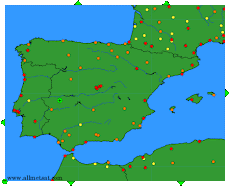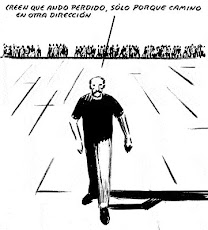viernes, 11 de noviembre de 2011
HEATHROW ASSOCIATION FOR THE CONTROL OF AIRCRAFT NOISE (HACAN) CLEAR SKIES: A SUCCESS STORY
En este artículo presentamos a HACAN Clear Skies, una organización que nació en el año 1960 con el nombre de KACAN (Kew Association for the Control of Aircraft Noise), que a los diez años pasó a llamarse HACAN (Heathrow Association for the Control of Aircraft Noise) y en 1999/2000 HACAN ClearSkies, cuando el ruido provocado por el tráfico aéreo invadió las vidas y hogares de los residentes en determinadas áreas de Londres y el valle del río Támesis, a más de 30 kilómetros de distancia del aeropuerto. Un cambio en las rutas y la operatividad del aeropuerto provocó que el ruido de los aviones apareciera de súbito en estas zonas en 1996. Esta acción, llevada a cabo por la vía de los hechos consumados, no contó con el preceptivo proceso de información y consulta pública a los posibles municipios y vecinos afectados.
El Aeropuerto de Londres-Heathrow es el mayor del Reino Unido, y uno de los líderes en el mundo en número de pasajeros y operaciones, a pesar de contar con sólo dos pistas.
Los gestores del Aeropuerto de Londres-Heathrow ofrecen detallada información del problema que crean a los vecinos de Londres y del valle del Támesis a través de la Heathrow Noise Action Web Site. Nada que ver con el juguetito del que tanto se enorgullece AENA.
En estos enlaces se pueden consultar en detalle qué es HACAN Clear Skies, su historia, la organización y sus demandas.
Nos fijamos en detalle en las demandas de su campaña Quieten the Skies (Silenciemos los cielos):
Campaign demands
Quieten the Skies
A practical programme from HACAN to curb the noise of aircraft from Heathrow and London City Airports
1. A third runway at Heathrow remains off the agenda.
2. Retain Runway Alternation. Runway alternation, the practice whereby aircraft landing at Heathrow switch runways at 3pm to give people in the areas closer to Heathrow a half day’s break from the noise, is vital for those areas. It ensures that people do not have a plane flying over the heads, one every ninety seconds, all day long.
3. Curb night flights. The current night flight agreement with the airlines ends in Autumn 2012. 16 flights are permitted between 11.30pm and 6am overflying at least half a million people, more than any other city in Europe. There are around 65 flights between 6am and 7am. We are pressing for a ban on night flights between 11pm and 6am, and a reduction between 6am and 7am. While night flights remain, they should be rotated on a daily basis so any community is only overflown one night in four.
4. End the practice of Heathrow operating at 99% capacity. This results in many planes are being held in the skies over London, causing unnecessary extra noise, emissions and air pollution, and it makes no business sense to operate with virtually no margin for delays or emergencies. Mechanisms, such a slot auctioning, which could ensure BAA operates at Heathrow at no more than 90% capacity, need to be investigated. The 480,000 cap should be regarded as an absolute limit, not a target to be reached.
5. Encourage fewer, if bigger planes, to use Heathrow. Sensible use of the larger, quieter aircraft could be a win-win situation, allowing more passengers to use the airport but with fewer planes. (The Government’s proposed Plane Tax could be the vehicle to encourage this to happen). It could allow Heathrow to cater for more passengers while operating at no more than 90% capacity.
6. Encourage planes to join their final approach path as late as possible. Since the mid-1990s, aircraft have been directed onto their final approach path sometimes 20 miles from the airport, resulting in such a concentration of noise in places like Vauxhall that the overall noise climate can be worse than parts of West London. The industry should use the new technologies coming on-stream which allow aircraft to be guided down with much more precision to ensure that aircraft join their final approach path as late as possible. Before they join the final approach path, the noise burden should be shared as equitably as possible with guaranteed periods of quiet for each community. Aircraft taking off are already more dispersed. The problem tends to be when they deviate from their usual routes, bringing noise to areas which were not previously overflown by departing aircraft. People need certainty.
7. Introduce, when practicable, a steeper ‘glideslope’ for aircraft when landing. This would mean planes are higher for longer. We understand the industry is looking at this but is still concerned that a much steeper glideslope might increase safety concerns.
8. Put in place a fair deal on sound insulation. The area where residents get help with insulation should be extended. The noise level where residents qualify for help around Heathrow is higher than that for people living around many other airports.
9. Stop expansion at City Airport. For parts of East and South-East London the combination of noise from Heathrow and City Airport has become a real problem. It has been exacerbated by the growing use of jet aircraft rather than the quieter turbo-props at City. It will become even worse if City Airport is allowed to increase flight numbers by 50%. That plan should be rejected.
10. Review the recent changes in City airport flight paths. The new flight path introduced in 2009 to accommodate the increase used of jet aircraft needs to be urgently and publicly reviewed as it has resulted in disturbance to vast swathes of East and North East London which never expected to be under a flight path. At busy times aircraft can be taking off over people’s homes about every minute or two at heights of less than 2,000 feet.
HACAN Clear Skies es la historia de una organización que ha conseguido importantes logros. Nos fijamos en dos de ellos, que esperamos sirvan de acicate y estímulo a aquellas asociaciones que persiguen objetivos similares en España:
El cuasi-cierre nocturno del aeropuerto. En el período que abarca de las 23:30 a 6 horas hay unas importantes restricciones operativas a los vuelos programados. Actualmente se realizan unas 16 operaciones de media en ese período. No hay salidas programadas y el primer vuelo toma tierra a las 4:30. Entre las 6 y las 7 de la mañana no hay restricciones y en ese período operan unos 65 vuelos en ambas pistas.
Estas restricciones no son definitivas ya que en gobierno, cada 5 o 6 años, tiene que llegar a un acuerdo con las aerolíneas para fijar las cuotas de vuelos nocturnos en los aeropuertos londinenses de Heathrow, Stansted y Gatwick. El acuerdo actualmente en vigor expira el otoño de 2012.
El objetivo de HACAN Clear Skies es la prohibición total de los vuelos en el período de 23 a 6 horas y la implantación de restricciones de 6 a 7 así como el uso alternativo de las pistas, para no perjudicar siempre a los mismos.
El segundo y el más importante fue la victoria judicial que paralizó la construcción de la tercera pista, dentro de los planes de ampliación del Aeropuerto de Londres-Heathrow.
Recomendamos la lectura de la información disponible en la web de HACAN Clear Skies: Heathrow Third Runway. How the campaign was won, y del libro The story of how the campaign to stop a third runway at Heathrow was won
Un libro de 52 páginas, escrito por John Stewart, presidente de HACAN, en el que cuenta cómo paralizaron los planes de ampliación del Aeropuerto de Londres-Heatrow, incluida la construcción de la tercera pista.
El libro presenta la estrategia y las tácticas utilizadas durante el proceso. Una historia inspiradora y, sobre todo, humana, que contiene lecciones valiosas e imprescindibles para todos aquellos que pelean por un objetivo, dondequiera que vivan y cualquiera sea su causa justa.
Además recomendamos la sección de informes.
Y un consejo a todas aquellas asociaciones del ruido: el éxito de HACAN Clear Skies y sus actuaciones se fundamenta en que luchan por una causa justa, creen en su lucha y están convencidos que se trata de una causa justa, son tenaces y constantes, y lo más importante, están unidos y esta unión la consagra un principio: su objetivo es solucionar el problema, no trasladárselo al vecino. Y así reza en su página web:
But we do not want to move Heathrow's problems elsewhere. That is why we have joined AirportWatch, the umbrella body that includes the protest groups around all the UK airports, as well as leading environmental organizations. AirportWatch takes the view that, if aviation paid its fair share of tax, there would be no need for significant expansion. AirportWatch unites all campaign groups across the UK.
Suscribirse a:
Comentarios (Atom)
















